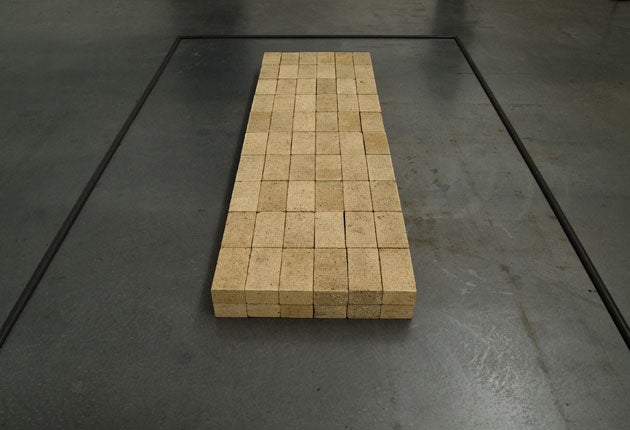Is Andre’s ‘Bricks’ a pile of old bricks or a magnificent piece of art? We still can’t decide
The 1970s row over whether ‘Bricks’ is art lingers on

Your support helps us to tell the story
From reproductive rights to climate change to Big Tech, The Independent is on the ground when the story is developing. Whether it's investigating the financials of Elon Musk's pro-Trump PAC or producing our latest documentary, 'The A Word', which shines a light on the American women fighting for reproductive rights, we know how important it is to parse out the facts from the messaging.
At such a critical moment in US history, we need reporters on the ground. Your donation allows us to keep sending journalists to speak to both sides of the story.
The Independent is trusted by Americans across the entire political spectrum. And unlike many other quality news outlets, we choose not to lock Americans out of our reporting and analysis with paywalls. We believe quality journalism should be available to everyone, paid for by those who can afford it.
Your support makes all the difference.Will the nation ever come to terms with Carl Andre?
As the American minimalist sculptor’s latest show opens at Turner Contemporary in Margate, yet again the various flashpoints about him are unrolled, of which the apex is of course the national fury unleashed in the 1970s over the acquisition by the Tate of “Bricks” (properly entitled Equivalent VIII).
For all his famous ability to infuriate right-minded people who like art to be about “recognisable things” Andre, now 77, is incredibly soft spoken in person, and most gentle in demeanour. He doesn’t much care to be on camera. And his uncle, of whom he was very fond, was the first presenter of Tomorrow’s World, Raymond Baxter. Doesn’t quite fit in with the idea of the artist as iconoclastic wild man.
His art is about “recognisable things”, anyway. The still surface of a lake; the beauty of a balcony running along a street; the power of a worn doorstep. He just puts the shape itself on display.
Yet even though it is beautiful, and contemplative, perhaps the work might still need a public health warning. The artist has a desire to follow through the idea of his sculpture as a “place”, a zone that can be walked on. Visitors to Margate will be encouraged to step on to a piece called 4x25 Altstadt Rectangle, a 1967 piece involving 100 worn metal plates mottled with colour. Sounds great, but watch how you go. My octogenarian mother remembers going on a trip to Tate Britain with fellow elderly keen-beans to see Andre’s work. “We were encouraged to walk on some Carl Andre slabs of paving which had been laid out on the gallery,” she says, “only they had a slight edge to them.” Of course, one of the elderly ladies tripped and, recalls my mother, “went down like a felled ox”. But that isn’t putting my mother off wanting to walk on the Altstadt Rectangle. “It’s what Andre wants.” Forty years after the “Bricks” headlines, we are still intrigued by the provocation of a sculpture. What a very good artist Carl Andre is.
Twitter: @RosieMillard
Join our commenting forum
Join thought-provoking conversations, follow other Independent readers and see their replies
0Comments